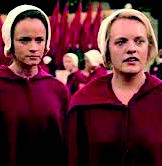Quick questions with ROBIN TAMANG Musician, Actor
A. Professional football player.
Q. One dead musician you’d like to bring back if you had the power?
A. Jimi Hendrix.
Q. Something people misjudge you about?
A. Playing the bad guy in the movies
Q. If you were stranded on an island with only one record to take with you, which one would that be?
A. “Tea for the Tillerman” by Cat Stevens
Q. Favorite Nepali artist?
A. My friend, Mukti (Shakya) dai
Q. Dal Bhat or Continental?
A. Dal Bhat
Q. What sport/s do you follow the most?
A. Football, of course
Q. A female singer you’d love to sing a duet with?
A. Janis Joplin
Q. What would youdance to? EDM or hip-hop?
A. Hip-hop
Q. Favorite guitar brand? You can’t say Fender!
A. Godin
Q. Something that's been in your wish-list for long?
A. Film School
Three great things to watch
Chernobyl
Looking back in time: This mini-series was produced by HBO
**the top TV series in 2019 in the UK
It tells the true story of the Chernobyl (USSR) nuclear disaster in April 1986. The series focuses on the reason behind the events that spiralled into the worst nuclear disaster the world has seen, with tens of thousands of fatalities over the following decades; the night of the disaster, the following few days, and resulting trials. But not as boring as it sounds! One friend described it as “more edge-of-your-seat than Game of Thrones”. In brief, a safety check went wrong when it was subject to 10 hours delay because of “decisions from the top”. The delay meant those carrying out the test had no prior knowledge or training.
Pressured by the head man at the plant into carrying out procedures which the operators knew were unsafe, the reactor core basically exploded sending airborne radioactive contamination over USSR and Western Europe. We watch in horror as local firemen, called in totally unprepared, literally melt over the next few days after exposure. We watch while villagers, who where only evacuated 36 hours later to a mere 10km away, proceeded to die over time. To this day the village of Chernobyl remains unsafe for habitation and children are born with defects resulting from their parents’ exposure to off-the-scale radiation. We get to see how the system worked in the old Soviet Union where blame was placed on others and problems denied. Communism at its worst.
The Crown
Looking back at history: This on-going 6 season series can be found on Netflix

This is a fascinating look at Queen Elizabeth and the British Royal Family starting when, on the death of her father, Elizabeth was crowned in 1952. In November 2019 Season 3 came out. But do watch the first two seasons, which focus on the early years of her reign and show how this young girl went from being a happy-go-lucky princess to Queen Heir Apparent and then Queen. Season 3 brings us into the 1960s and 70s with historical happenings that I can remember from my childhood and school books. It also takes us into the—what would have been then a very secret—world of the personal lives of the Royal Family. It’s an excellent look into British society too. To paraphrase the Queen in Season 3 (and the writers would not have predicted the whole Boris Johnston suspension of Parliament fiasco in September 2019), the Queen supports the post of Prime Minister, not the man, and the Queen supports and abides by the Constitution. So if you know your history and modern day politics, this is for you. Even if you don’t, it’s a lovely look at a living Royal Family. Constitutional Monarchy at its best.
Handmaids Tale
Set in a fictional society: Shown on AXN India

Based on the novel by Margaret Atwood, the Handmaids Tale takes place after the Second American Civil War results in a totalitarian, patriarchal society. Women in general have been rendered sterile by warfare. We also learn all individuality, independence, money, jobs and status are removed from all women. The ‘wives’ are those married to high level ‘Commanders’, and the ‘Handmaids’ are those remaining fertile women who are drafted into a life of child-bearing slavery. The rest of the women are then placed into various roles such as cooks, housemaids or sent for hard labour, depending on their age and skills. The Handmaids Tale follows the life of one Handmaid, Offred (women’s names are also taken from them) and shows what Handmaids have to go through in order to produce a baby for the Commanders.
A baby which is then handed over to the Commander’s wife and the Handmaid reposted to the next Commander’s household. Needless to say the Commanders enjoy in their private clubs forbidden fruits such as prostitutes, alcohol, etc that are banned for the rest of the population. This series demonstrated how those in power can take freedom from the masses by simply closing bank accounts, removing employment, and closing borders in a single sweeping move. Totalitarian, tyranny and patriarchy to be avoided.
Quick questions with AYUSHMA RANI SINGH Model/Emcee
Q. Name one fashion faux pas you regularly commit.
A. Definitely wearing the heels I can’t walk in. Lol.
Q. If you could wish for anything…
A. To be able to read any living being’s mind.
Q. What would be your fancy dress costume?
A. Egyptian Queen Cleopatra
Q. How would you describe yourself in a sentence?
A. An ambitious young girl who thrives on challenges, so I always have something to strive towards.
Q. Your makeup (style) icon?
A. Rihanna! Forever and always.
Q. The best advice you’ve been given?
A. This advice came from my mother and it has changed my life: “Your moods are contagious, always share positive energy”
Q. Who inspires you the most?
A. Ellen Degeneres
Q. What are you proud of but never have an excuse to talk about?
A. I’m literally so proud of being an amazing daughter to my mother and taking good care of her.
Q. If you had only one day left to live, what would you do?
A. I would spend the whole day with my family and my closest friends at home, having mo:mo party and barbeque and getting drunk.
Asif Shah: A master of many trades
A follower of Nepali music, film and television will surely have come across Asif Shah’s name, one way or the other. From singing the popular “Pahilo Maya” and half a dozen other songs with The Unity band in the 2000s, to acting in music videos like Kali Prasad’s “Insta Ko Photo”. To directing music videos, shaking a leg in the famous “Kutu Ma Kutu” song, to starring in the movie “Dui Rupaiyan” and another called “Karkash,” Shah has had a distinguishable presence everywhere. His popularity on television has only increased as a two-time host of the popular reality show “Nepal Idol”.
But when you ask the 39-year-old what he does for living, “I’m an ad director” comes the prompt reply. “That comes from the top of my head when someone asks me about my profession,” he adds. “Although I don’t share much on social platform about my ad films, this is what I’ve mainly been doing of late.” Shah co-owns G21 Productions with his brother Asim Shah and has made hundreds of television commercials for brands including Ncell, Coke, Sprite, and Himalaya Herbals.
Shah’s TV career started in 2001 when he got selected as a presenter for a local channel. “It was by fluke,” he says. “A couple of my friends were trying out and I was giving them pointers. They asked me to come along with them just for fun, and I was the one who landed the job, not them.” That interview would kickstart Shah’s almost two-decade-long career in media. “I guess my destiny pulled me in,” he says.
Within two weeks of starting as a presenter, Shah was also producing his own shows and directing them, while also honing his presentation skills. He went on to work with some of the biggest television channels in the country and at the same time started the G21 production house. With G21 Digital and G21 Productions—separate entities—Shah began making music videos and films as well as TVCs.
A presenter and producer interested in music directing music videos is only natural. But Shah’s ad-making interests came from the inspiration he drew from TVCs when young. “I remember watching a TVC of an Indian product called Savlon. It was simple, subtle, and brought home the point, and at the same time I knew it was not a high budget production. I realized creativity matters more than big budget in TVCs.” Shah’s love for TVCs over actual programs inspired him to start a career in ad-filmmaking.
As for his Nepal Idol stint, Shah says that it was an offer he could not resist. He was offered a chance to host the second season of the international franchise when he was on a hiatus from the screen, and he decided to take it. Asked if the time dedicated to Nepal Idol hampered his other professions, he replies in the negative. “It helped me, in fact,” Shah says. “It was about time I made it back to the small screen, and with Nepal Idol’s popularity, people started recognizing me more. My clients, agencies and even the celebrities I endorsed for my ads started recognizing me more.”
Shah is all praise for the Nepal Idol franchise, and claims AP1 television’s endeavors brought about a revolution in Nepali television. “Nepal Idol came at a time when the TV audience was dwindling and people watched Nepali channels just for news,” he says. “It proved that if TVs had good content, people would still watch it. This had a positive impact on the whole industry and locally produced shows started scaling up.”
Although he doesn’t want to call himself a singer, Shah’s love for music has also resulted him in continuing his passion. He has recently released “Bato Biraye”, which is already a hit, with a million views on YouTube. “I will continue with Nepal Idol as long as it remains my passion and for now, we are also planning to expand G21 Digital’s scope,” he says. “We will start operating like an international record label and give artists and musicians more platforms to showcase their music.”



















